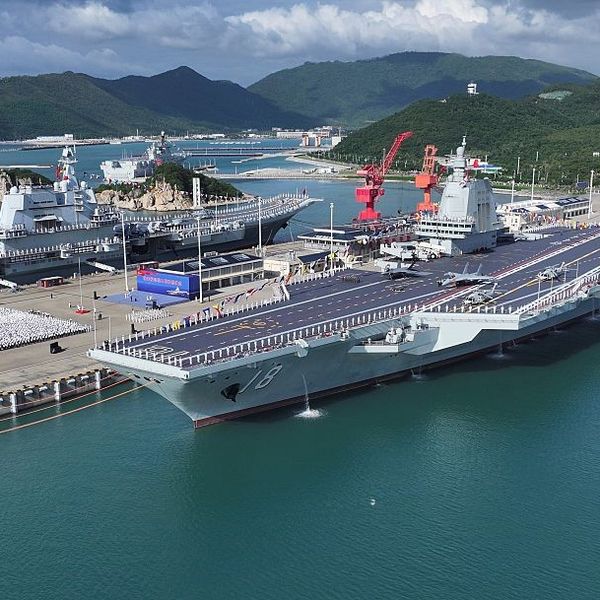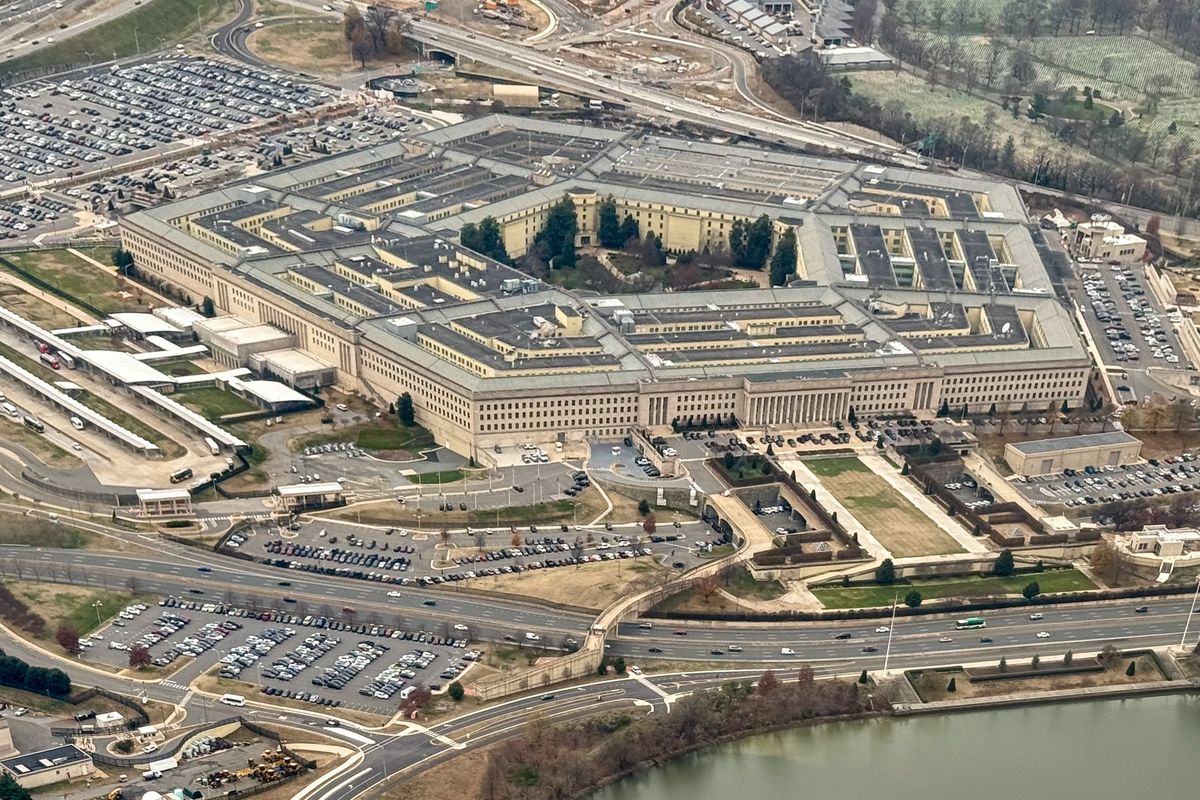OPINION (Updated)— On November 2, Pyongyang launched an unprecedented 23 missiles and, on November 3, launched three additional ballistic missiles, that according to Japanese and South Korean officials, included an Intercontinental Ballistic Missile (ICBM) that reached an altitude of 1,193 miles, flying 472 miles at Mach 5. This was the third ICBM launched by North Korea. The first was in 2017, followed by a more recent launch in March 2022.
One of the 23 missiles fired this week, landed south of the buffer zone in the sea border between the two Koreas, marking an unprecedented escalation since the buffer was established in 1948. South Korean President Yoon Suk-yeol described it as “territorial encroachment.”
South Korea responded by launching three air-to-surface missiles toward the northern side of the border, with North Korea responding by firing 100 rounds of artillery.
North Korea has been protesting a U.S. – South Korea joint air exercise dubbed ‘Vigilant Storm’ that began on November 1, and involved more than 240 aircraft, including stealth fighters.
This escalation of tension comes after a trilateral meeting on October 26 between Deputy Secretary of State Wendy Sherman and South Korea’s First Vice Minister Cho and Japan’s Vice Foreign Minister Mori. At that meeting it was announced that there would be an “unprecedentedly strong response” to a potential seventh nuclear test from North Korea.
In my expert opinion, given the unprecedented number of ballistic missiles that North Korea has launched this year, (23 recent launches, preceeded by an additional 40), it’s likely that North Korea will conduct a seventh nuclear test, once they’re confident that it would be a successful test.
Regardless of the response to a potential seventh nuclear test, this is a dangerous escalation of tension, with the possibility of miscommunication or misunderstanding that could lead to accidental conflict on the Korean Peninsula.
Resuming meetings and discussions with North Korea is necessary. It’s something China helped facilitate in 2003, when tensions were high. It’s something China can and should do in 2022, when the stakes are even higher.
North Korea has been clear in stating that they will not abandon their nuclear weapons and will continue to build more nuclear weapons and sophisticated ballistic missiles. Over the last two weeks, North Korea has conducted an additional seven rounds of missile launches, to include an intermediate-range ballistic missile capable of reaching Guam and possibly beyond, a KN-23 short-range ballistic missile, modeled after Russia’s Iskander, capable of maneuvering in flight and flying low, to evade missile defense, and an underwater launch.
North Korea said this barrage of nuclear-capable missile launches – and warplanes — were practice exercises for tactical nuclear strikes against South Korean and U.S. targets.
In September, Kim Jong-un announced a new nuclear doctrine, permitting the first use and preemptive use of nuclear weapons if an imminent attack by weapons of mass destruction against North Korea’s strategic targets or leadership is detected. This is a significant change, given that in 2013 North Korea’s nuclear doctrine was that their nuclear weapons were a deterrent to protect the North from an attack from a hostile power. Now, however, the North could preemptively use its nuclear weapons if there an actual or perceived imminent threat against the North or its leadership.
The United States and South Korea devote significant resources to maintaining a robust intelligence, surveillance, and reconnaissance (ISR) capability to monitor North Korea to ensure that there are no military surprises. It’s unlikely that North Korea has a similar robust capability to monitor South Korea and the U.S., thus the concern that Pyongyang may mistakenly view a routine military drill or exercise as an actual threat and conduct a preemptive nuclear strike against the South. This, then, would be the opening volley in an escalatory nuclear – and conventional – military confrontation on the Korean Peninsula.
Subscriber+Members have a higher level of access to Cipher Brief Expert Perspectives on Global Issues. Upgrading to Subscriber+ Status now.
Although Kim Jong-un had clearly stated that North Korea will never abandon its nuclear weapons and will no longer engage in negotiations about its nuclear arsenal, it’s imperative that greater effort be made to defuse the current impasse. The goal is and must continue to be the eventual denuclearization of the Korean Peninsula. But this will take time. We knew this during the Six Party Talks with North Korea and the resultant Joint Statement of September 19, 2005, that memorialized North Korea’s agreement to abandon all nuclear weapons and existing nuclear programs and returning, at an early date, to the Treaty on the Nonproliferation of nuclear weapons (NPT) and IAEA safeguards. In return, the United States stated that it has no intention to attack or invade North Korea with nuclear or conventional weapons and, inter alia, the six countries undertook to promote economic cooperation in the fields of energy, trade, and investment, bilaterally and/or multilaterally. Of note, however, the Joint Statement clearly stated that it was to be implemented in a phased manner in line with the principle of “commitment for commitment and action for action.”
We knew in 2005, after over two years of intense negotiations with North Korea, that Mr. Kim would not agree to the “Libya Model”, when Gaddafi initially abandoned his nuclear program in anticipation of diplomatic recognition and other deliverables. In fact, Libya’s nuclear arsenal was in unpacked crates, never assembled and far from a nascent nuclear program. Eventually, as we know, Gaddafi was brutally killed by his own people. These developments got the attention of North Korea and as negotiators, we were routinely told that North Korea would never initially abandon its nuclear weapons and programs (the Libyan Model) in anticipation of deliverables from the United Sates, South Korea, Japan, China, and Russia. Accordingly, all our discussions and the actual Joint Statement were clear in an “action for action” approach to denuclearization – as North Korea denuclearized, they received the promised deliverables, with the end goal being total denuclearization in return for security assurances, economic development assistance and normal diplomatic relations with the United States, only when the North also made progress on human rights toward its citizens.
Get your 10-minute daily national security brief with Suzanne Kelly and Brad Christian by listening to The Cipher Brief’s Open Source Report Podcast wherever you listen to podcasts.
Former President Donald Trump during his February 2019 Hanoi Summit was unable to convince Mr. Kim that North Korea would have to abandon all its nuclear programs – not just the Yongbyon plutonium nuclear facility – before sanctions could be lifted. Mr. Kim was not willing to go that far, and discussions ceased. To date, negotiations have not resumed, despite U.S. efforts to engage North Korea unconditionally. And since 2019, North Korea has built more nuclear weapons and more sophisticated ballistic missiles – hypersonic, cruise, submarine-launched – and reportedly is preparing for a seventh nuclear test.
Given these developments, it would appear appropriate to use all the tools of diplomacy to defuse the current nuclear escalatory impasse with North Korea. A message to Mr. Kim, directly or through China, indicating a willingness to discuss sanctions relief in return for the halting of all missile launches, nuclear tests, and production of fissile material (plutonium and highly enriched uranium) for nuclear weapons, in an action for action process would seem appropriate.
At a minimum, it would display continued U.S. flexibility, with the goal of not rewarding North Korea for its bad behavior but defusing the current nuclear escalatory tension, with the goal of the eventual complete and verifiable denuclearization of North Korea.
This column by Cipher Brief Expert Ambassador Joe DeTrani was first published in The Washington Times
Read more expert-driven national security insights, perspective and analysis in The Cipher Brief













